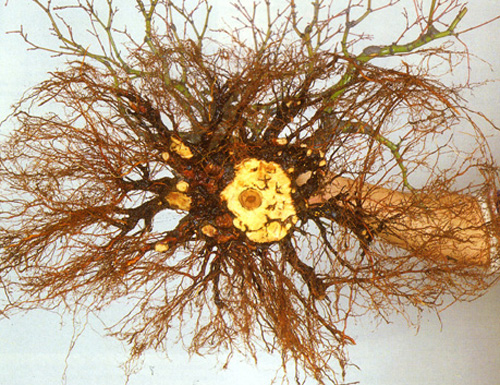
Bottoms up! This somewhat intriguing shot is from Bonsai Today, issue 64. This
post, and another to follow soon, explore how Mr. Harumi Miau arrived at this point.
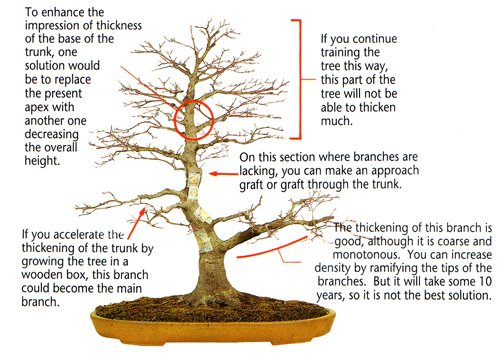
Before. Japanese maple (Acer plamatum) with some unsolicited bonus design tips.
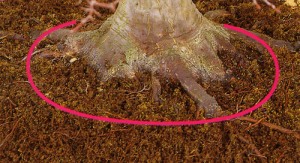
Before. Close up of the uneven and unattractive nebari. The dark color of the exposed roots is a sign of poor vigor caused by lower roots stealing energy from top roots.
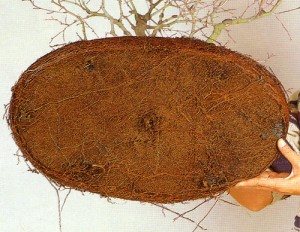
This shot clearly indicates the cause of the problem shown in the photo above; too much energy has flowed to the densely matted lower roots.
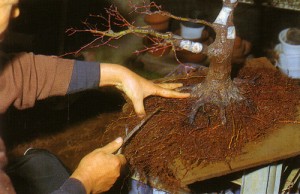
After removing most of the lower roots, an iron root hook is used to untangle and comb out the top roots.
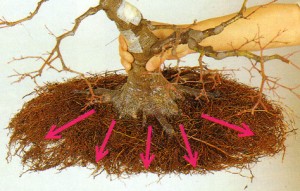
The combing is completed. The arrows indicate the direction of the roots
Enough for now. Stay posted, the rest of this article.
Part one of In Search for the Perfect Nebari is comprised of An Ingenious Technique parts one and two taken together. For the rest of In Search of the Perfect Nebari, see parts three & five.
Extremely usefull and enjoyable articals thank you
Clive
I just want to share an idea that was passed on to me about 10 years ago for improving the nebari with Japanese Maples, which has been very successful. If one uses the drip pan of a large flower pot with holes drilled for drainage,the roots of the Japanese Maple will spread making excellent radial rootage. The trees are transplanted every two years at which time the roots are trimmed and adjusted for directional growth.
This tip was passed on to me from a Japanese Maple enthusiast, and has proven to give great results. I just wanted to share this information.
Yeah, good technique.Similar to using tiles or boards under field grown material.
I agree; it is a very good technique. I collected a Scots Pine (Pinus Sylvestris) just the other day which was growing on a flat stone. The stone was covered by only about an inch of moss and decaying leaves. When I removed the tree, I found that the roots had grown in a perfectly radiating circle.